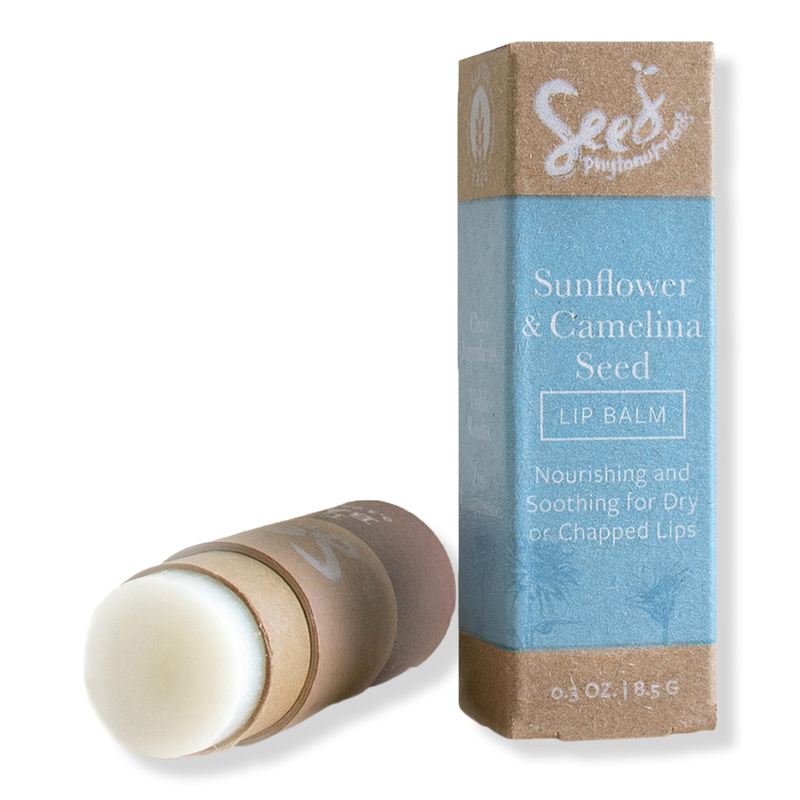PRODUCT REVIEW
Cheaper alternatives
What can the product work for?
Works for
Moisturizing
What does the product description say?
Together, these three luxe ingredients hydrate deeply (say goodbye to chapped, dry lips) while protecting against UV damage and pollution.
Honesty check
How honest is this product?
| Promise | Can it deliver? |
|---|---|
| Moisturizing |
Buy now
We receive a small commission for purchases made through these links at no cost for you. Thank you for your support! Learn more
Can it cause trouble?
- Overall product irritation risk
- Acne & comedogenic risk ingredients: 5
Potential irritants
Comodogenic ingredients
User reviews (0)
Similar products & dupes
 RÓEN - Elixir Tinted Lip Oil Stella |  ROEN Beauty - Elixir Tinted Lip-Oil-Balm |  Evereden - Baby Lip Balm |  evanhealy - Lip Balm - Whipped Shea Butter |  Saint Cosmetics - Velvet Lip Cream |  Burt's Bees - Advanced Relief Lip Balm For Extremely Dry Lips, Unscented |  Sun Bum - CocoBalm Moisturizing Lip Balm - Pina Colada |  Kosas - port LipFuel Hyaluronic Lip Balm |  Dionis - Goat Milk Matte Tint Lip Balm |  INIKA - Certified Organic Lip Tint |  Seed Phytonutrients - Lip Balm | |
| Price | |||||||||||
| WIMJ similarity score |
45%
|
34%
|
34%
|
33%
|
32%
|
31%
|
31%
|
31%
|
31%
|
31%
| |
| Key ingredients | Common:
Other: | Common:
Other:
| Common: Other:
| Common: Other: | Common:
Other:
| Common:
Other:
| Common:
Other:
| Common:
Other:
| Common:
Other: | Common:
Other:
| |
| Irritancy | IRRITANCY
MEDIUM
| IRRITANCY
MEDIUM
| IRRITANCY
LOW
| IRRITANCY
LOW
| IRRITANCY
LOW
| IRRITANCY
LOW
| IRRITANCY
MEDIUM
| IRRITANCY
MEDIUM
| IRRITANCY
MEDIUM
| IRRITANCY
MEDIUM
| IRRITANCY
LOW
|
| Potential Irritants |
|
|
|
|
|
|
|
|
|
|
|
| All ingredients |
|
|
|
|
|
|
|
|
|
|
|
Ingredients & concentrations
All ingredients
Key Actives
Potential irritants
Comodogenic ingredients
All ingredients
Ingredient list view
Cocos nucifera oil, Helianthus annuus seed oil, Bis-diglyceryl polyacyladipate-2, Copernicia cerifera wax, Euphorbia cerifera wax, Candelilla cera, Simmondsia chinensis seed oil, Sodium hyaluronate, Tocopheryl acetate, Phenoxyethanol, Titanium dioxide, Ci 77891, Ci 45410, Ci 15850, Ci 26100, Unknown, Cocos nucifera oil, Helianthus annuus seed oil, Bis-diglyceryl polyacyladipate-2, Copernicia cerifera wax, Euphorbia cerifera wax, Candelilla cera, Simmondsia chinensis seed oil, Titanium dioxide, Ci 77891, Sodium hyaluronate, Tocopheryl acetate, Phenoxyethanol, Mica, Iron oxides, Ci 77499, Ci 77491, Ci 15850, Cocos nucifera oil, Helianthus annuus seed oil, Bis-diglyceryl polyacyladipate-2, Copernicia cerifera wax, Euphorbia cerifera wax, Candelilla cera, Simmondsia chinensis seed oil, Iron oxides, Ci 77489, Sodium hyaluronate, Tocopheryl acetate, Phenoxyethanol, Titanium dioxide, Ci 77891, Ci 15850, Ci 42090
Sources
- Effect of Olive and Sunflower Seed Oil on the Adult Skin Barrier: Implications for Neonatal Skin Care
- Topically Applied Sunflower Seed Oil Prevents Invasive Bacterial Infections in Preterm Infants in Egypt
- Effect of topically applied lipids on surfactant-irritated skin
- Impact of topical oils on the skin barrier: possible implications for neonatal health in developing countries